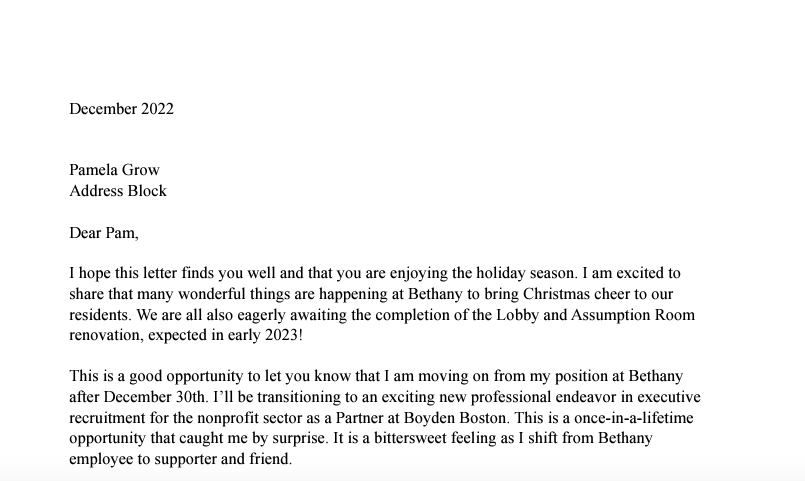
If you’re considering quitting your nonprofit job, you’re not alone. GiveButter reports that burnout is affecting more than half of all nonprofit employees. And a recent study found that the average tenure for new development directors was roughly 16 months.
There’s nothing better than finding the right fit for you. Some of my favorite readers have been with their organizations for five, ten, or even 20 years. They’re often the happiest in their jobs. And they’re the ones regularly reporting amazing wins (one brought back a 20-year lapsed donor).
But there’s also nothing worse than being in a job you hate. It’s painful. It’s demoralizing. Especially when you’re not allowed to do your job.
So, when is the right time to quit? And how can you do it gracefully, without burning any bridges?
If you’re torn, you’ll definitely want to read these before-and-after LinkedIn articles about a young fundraiser named Kathleen.
There are a lot of factors to consider when you’re thinking about quitting your nonprofit job. First, you have to ask yourself if you’re actually ready to leave. Are you burned out? Are you feeling unfulfilled?
Or are you just ready for a change?
If you’re certain that you want to leave, the next step is to figure out how to quit gracefully. After all, you don’t want to burn any bridges or leave your organization in a difficult situation. Once you decide to quit, do it right. Here are a few tips on how to quit your nonprofit job gracefully:
1) Give notice: This may seem obvious, but it’s important to give your employer plenty of notice before you leave. Two weeks is usually standard, but if you have a good relationship with your employer, you may want to give more notice. This will give them time to find a replacement for you and minimize the disruption to your organization.
2) Put your resignation in writing: This is just a courtesy, but it’s always best to put your resignation in writing so there’s no confusion later on down the road. Plus, it’ll give you a chance to collect your thoughts and potentially avoid any awkward confrontations.
3) Be honest: When you resign from your position, be honest about your reasons for leaving. If you’re burned out or frustrated with your job, tell your employer that. They may not be happy to hear it, but it’s better than them hearing it from someone else down the line.
4) Offer help: When you resign from your position, offer to help train your replacement. Yes, even if you’ve been treated like crap. You’ll never regret taking the high road.
5) Keep it positive: Thank your employer for the opportunity to work at the organization. Express your gratitude for what you’ve learned during your time there. Wishing your former colleagues well will go a long way toward maintaining relationships and ensuring a smooth transition for everyone involved
6. Let supporters and contacts know how to find you: Once you’ve resigned, it’s likely that you won’t be able to keep in touch with everyone at your old job. So make sure to let your trusted contacts know how they can reach you after you’ve left.
Take a cue in graceful transitions from my dear friend and colleague, Jodi-Joy O’Keefe on how to transition with your donors and contacts. When she left her position as Chief Development Officer with Bethany Health Care Center, Jodi-Joy took the time to let beloved supporters know.
What about you? In any job, the decision to leave can be a tough one. But when you work for a nonprofit organization, that decision can be even harder.


















 I can’t wait to meet with you personally.
I can’t wait to meet with you personally.
Comments on this entry are closed.